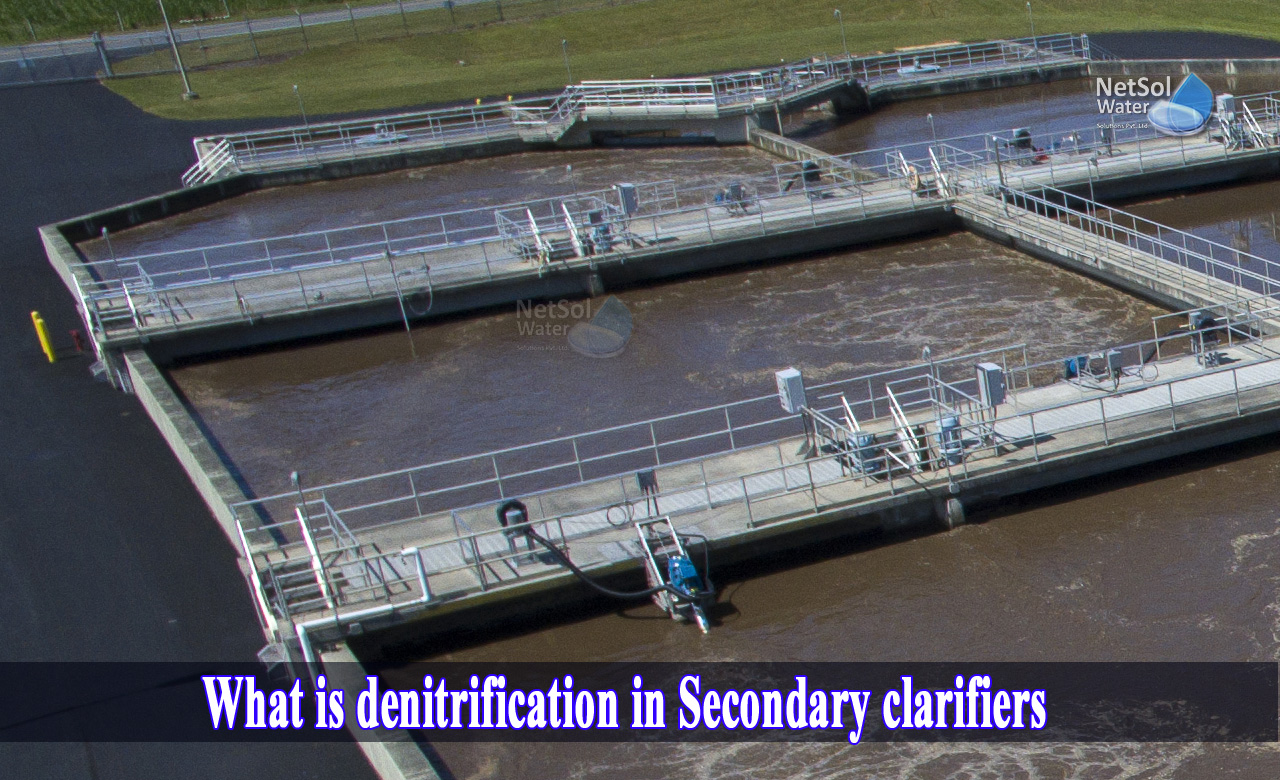Principle of secondary clarifiers
Secondary clarifiers extract flocculated biomass from the waste liquid. Their performance is determined by a variety of elements, including activated sludge properties (settleability), hydraulic loading rate, solids loading rate, return activated sludge flow and clarifier physical features.
What is Denitrification?
It is a microbially aided process that lowers nitrate (NO3-) to create molecular nitrogen (N2) via a succession of intermediate gaseous nitrogen oxide products. Denitrification is a kind of respiration performed by facultative anaerobic bacteria that decreases oxidized forms of nitrogen in reaction to the oxidation of an electron source such as organic materials. In order of most to least thermodynamically advantageous, the preferred nitrogen electron acceptors are nitrate (NO3-), nitrite (NO2-), nitric oxide (NO), nitrous oxide (N2O), and ultimately dinitrogen (N2), completing the nitrogen cycle.
Denitrifying microorganisms require less than 10% oxygen concentration as well as organic C for energy. Since denitrification may eliminate NO3, limiting its leaking into groundwater, it can be used to treat sewage or animal waste with a high nitrogen concentration.
What is denitrification in secondary clarifiers?
When bacteria begin to utilize nitrate and nitrite as alternate electron acceptors, denitrification occurs. This is a complicated way of saying that bacteria use the oxygen in nitrate and nitrite, leaving nitrogen gas. Denitrification in a treatment basin is a favourable indicator, and it is frequently necessary for facilities with nitrite/nitrate discharge limitations. Denitrification in a secondary clarifier might result in floating solids with TSS carryover into the effluent.
Preventing denitrification in secondary clarifiers:
• Adjust recycle rates to keep bed depths between 2 and 3 feet.
• Keep hydraulic residence time in clarifier between 2 and 4 hours.
• Because warm temperatures stimulate denitrification (high metabolic activity), the issue is frequently worse in the summer.
• Use a water spray to degas the floating solids; you'll notice bubbles forming and the sludge sinking.
Use of denitrification in wastewater treatment
A denitrification is an act of extracting nitrogen from sewage and municipal wastes. It is also an important step in artificial wetlands for preventing nitrate contamination of groundwater caused by excessive agriculture or domestic fertilizer use.
The reduction can also occur in anoxic circumstances via a process known as anaerobic ammonium oxidation (anammox):
NH4+ + NO2− → N2 + 2 H2O
Compounds such as methanol, ethanol, acetate, glycerine, or proprietary products are added to the wastewater in certain wastewater treatment plants to offer a carbon and electron source for denitrifying bacteria. The type of the electron donor and the process operating parameters affect the microbial ecology of such designed denitrification systems. Industrial wastewater is also treated using denitrification techniques. Many types and designs of denitrifying bioreactors are commercially available for industrial purposes, including Electro-Biochemical Reactors (EBRs), membrane bioreactors (MBRs), and moving bed bioreactors (MBBRs).
Aerobic denitrification using aerobic denitrifiers has the potential to remove the requirement for separate tanks while also reducing sludge production. Alkalinity needs are less strict because alkalinity created during denitrification can partially compensate for alkalinity consumed during nitrification.
What do we offer?
Netsol Water is a world-class water and wastewater management company that provides complete water treatment, industrial wastewater treatment, sewage treatment, desalination, and Zero Liquid Discharge (ZLD) solutions. We have a track record of producing and treating difficult-to-treat wastewater at a cheap cost. Our expertise is in bringing together our teams to ensure a seamless project implementation. We want to include cutting-edge technologies, reduce our carbon footprint and save energy.
Contact us at +91-9650608473 or mail at enquiry@netsolwater.com for further information or to make a purchase.



